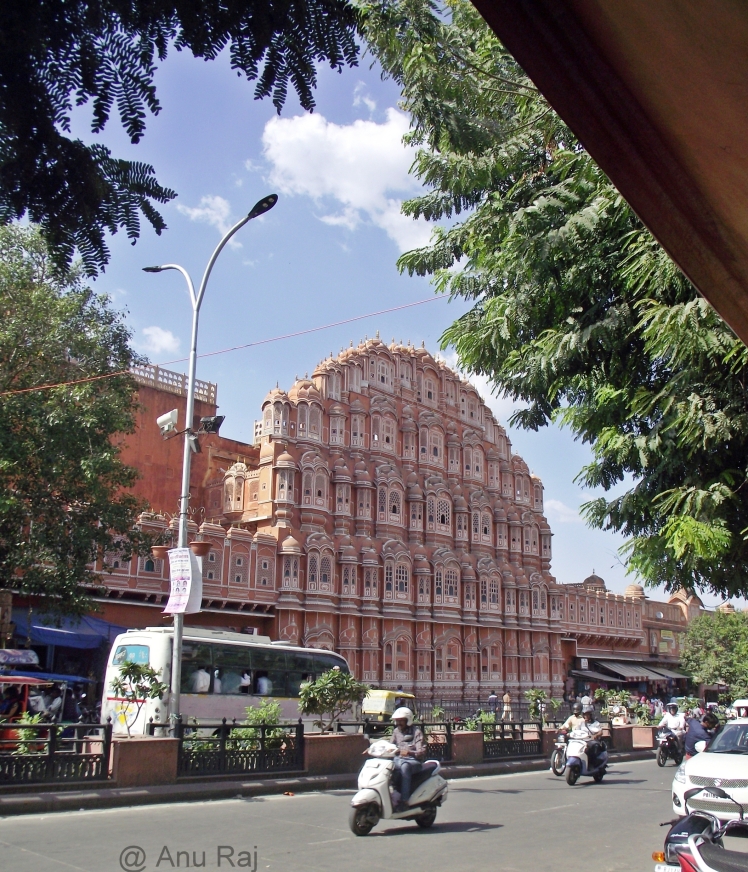
I had been to Jaipur many many years ago as a child and had seen the Hawa Mahal from outside, while passing through the market then.
This time got lucky, to visit the renovated Hawa Mahal. Hawa Mahal (Palace of wind) is located in Badi Chopad area in Jaipur. This is the same area which has the famous LMB (Laxmi Mishthan Bhandaar) and Johari Bazar. Hawa Mahal is in close vicinity to the City Palace and Jantar Mantar.
We had parked our vehicle close to Jantar Mantar and from there we realised that Hawa Mahal was in walking distance (which is what we did – walk). This is a ticketed building. In 2006, restoration and renovation was undertaken on this structure. The corporate sector has lend its hand to restore, renovate and maintain the historical structure in Jaipur – Unit Trust of India had adopted Hawa Mahal.
The building has been constructed in red and pink sandstone (seen from the front side). The structure was built in 1799 by Maharaja Sawai Pratap Singh. The designer for the same was Ustad Lal Chand who had designed the building in the form of the crown of Krishna (as desired by Sawai Pratap Singh). The structure has 5 stories with 953 Jharokhas (small windows) decorated with intricate latticework. This unique feature of the structure makes it look like a honeycomb of a beehive. The structure rises 15m from its high base.
The lattices play another important role – they cool the air coming in (Venturi effect). The cool air and the fountains air condition the whole area during the high temperatures in summers.
One can see a beautiful blend of Hindu Rajput style (domed canopies, fluted pillars, lotus and floral patterns) and Mughal style (stone inlay filigree work, arches) architecture in Hawa Mahal.
Chapter XIX ‘Jeypore’ (page 228) from the book ‘India and its native princes: travels in Central India and in the presidencies of Bombay and Bengal’ by Rousselet, Loius; Charles Randolph Buckle first printed in London in 1875 by Chapman & Hall give interesting description of Hawa Mahal – it mentions that it was the favourite resort of Maharaja Sawai Jai Singh, was 6 storied out of which last three are only light kiosks surrounded by innumerable belfreys, the view of the from the top floors of the city is compared to boulevards of Paris.
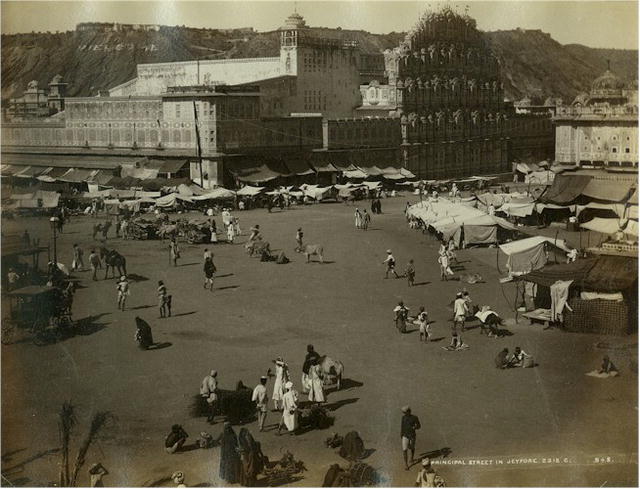
The entrance for this building is from the rear side (the front facade being the side in the market, interestingly it has no door for entry). The rear facade is quite simple and looks bare in comparison to the front facade. The building was never constructed as a regular residential complex. The royal ladies used it to observe everyday life and various processions in the street below without being seen. This was also the favourite resort of Maharaja Sawai Jai Singh.
For pictures of Hawa Mahal Click here
As per the information slab right at the entry, the first story of the building was used to celebrate festivities of winter (Sharad) – and this explains the presence of a big courtyard with a lovely fountains. The second floor has beautiful precious stone inlays and thus was called ‘Ratan Mandir’ (Gem Temple), the third floor ‘Vichitra Mandir (strange temple) was used by the King to worship Lord Krishna, the fourth floor is called ‘Prakash Mandir’ (Light Temple) and the fifth floor is called ‘Hawa Mandir’ (Wind Temple), the structure gets its name from the fifth floor.
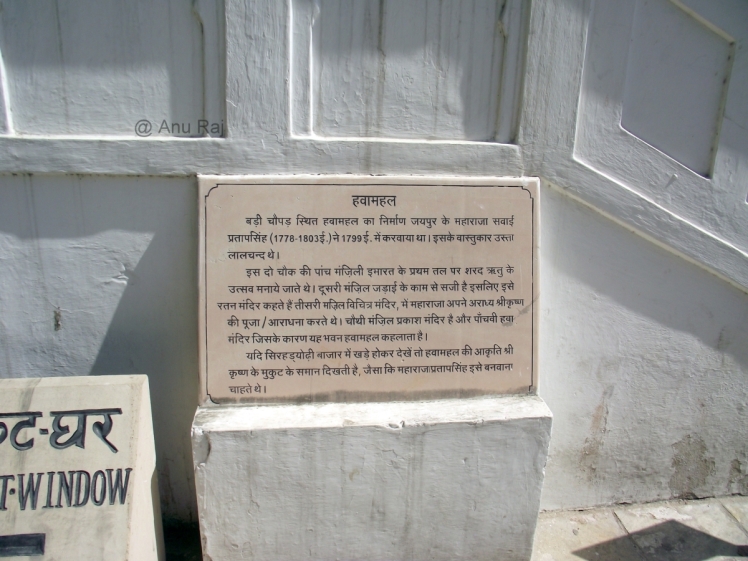
Once you climb the few stairs to reach the entry area, there is a gate which has images of various Hindu Gods and Goddesses carved on it. Move further ahead and you enter into a covered pillared corridor with a central courtyard. Right in the centre of the courtyard, there is fountain. Other than the stairs we had climbed (which could be a new addition), the entire building has no stairs, only ramps. The logic behind the same is that the royal ladies never walked (they couldn’t have – with those heavy jewellery items and heavy clothes it would have been not only uncomfortable but painful too), so they were carried in palanquins.
The top three stories are just single room thick. The 900+ niches (or windows) which look like pigeon holes from inside give the structure a mysterious feel. Light coming in from the multi coloured glass work in windows (both inside and on the front) transports you into a beautifully illuminated fairy land.
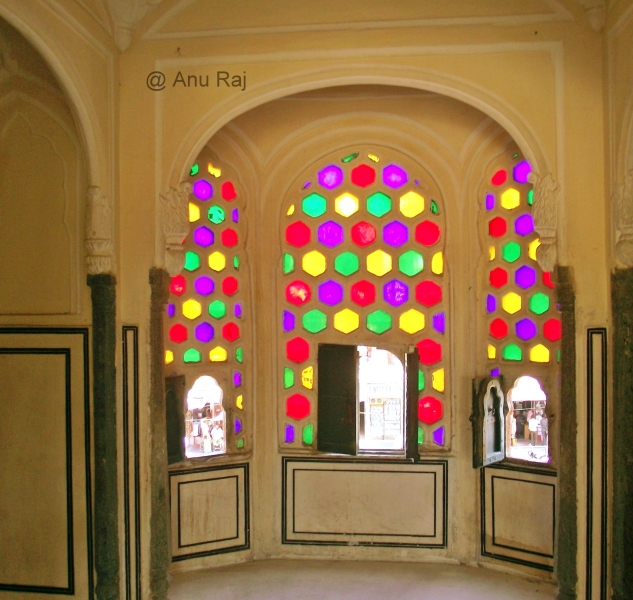
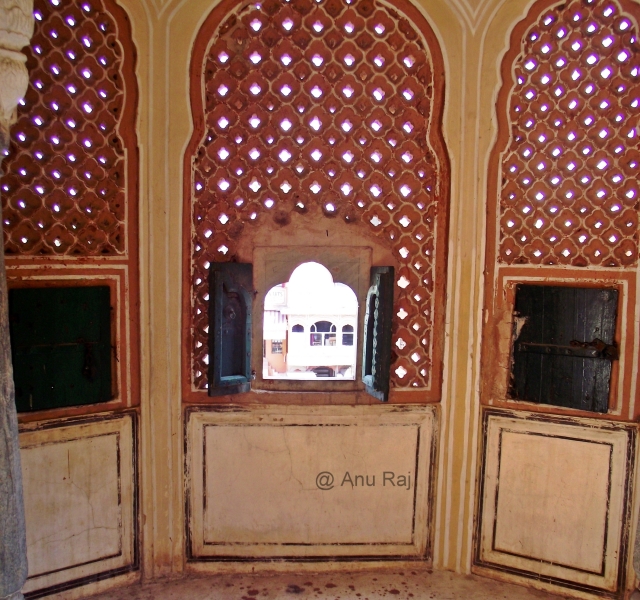
From the top floor, one not only gets a lovely view of the busy street below but also some other places – like Amer, City Palace, Jantar Mantar and so on,
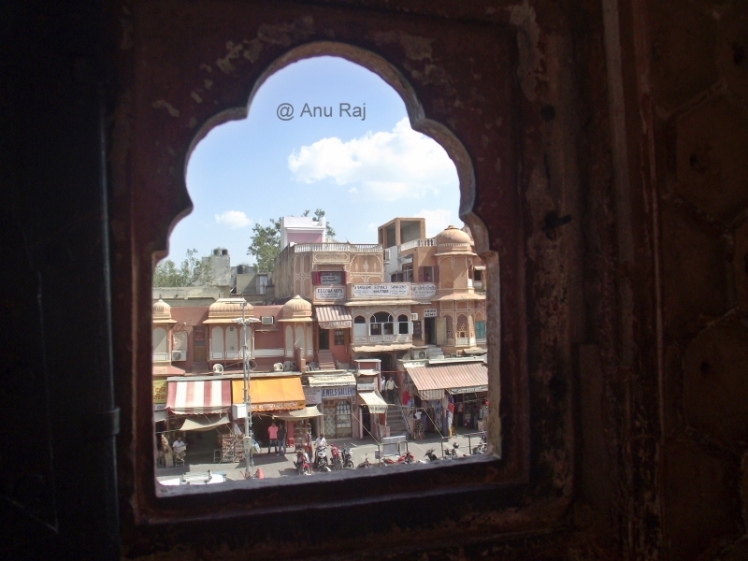
While watching from the Jharokhas, we were transported back into the ancient princely era of the royalty only difference was that we were observing the hurl burl on the road below including the Metro construction work.

An interesting and a must visit destination in Jaipur


Lovely pictures and narrative. surely hawa mahal is synonymous with Jaipur
LikeLike
Thanks. Means a lot.
LikeLiked by 1 person
🙂
LikeLike